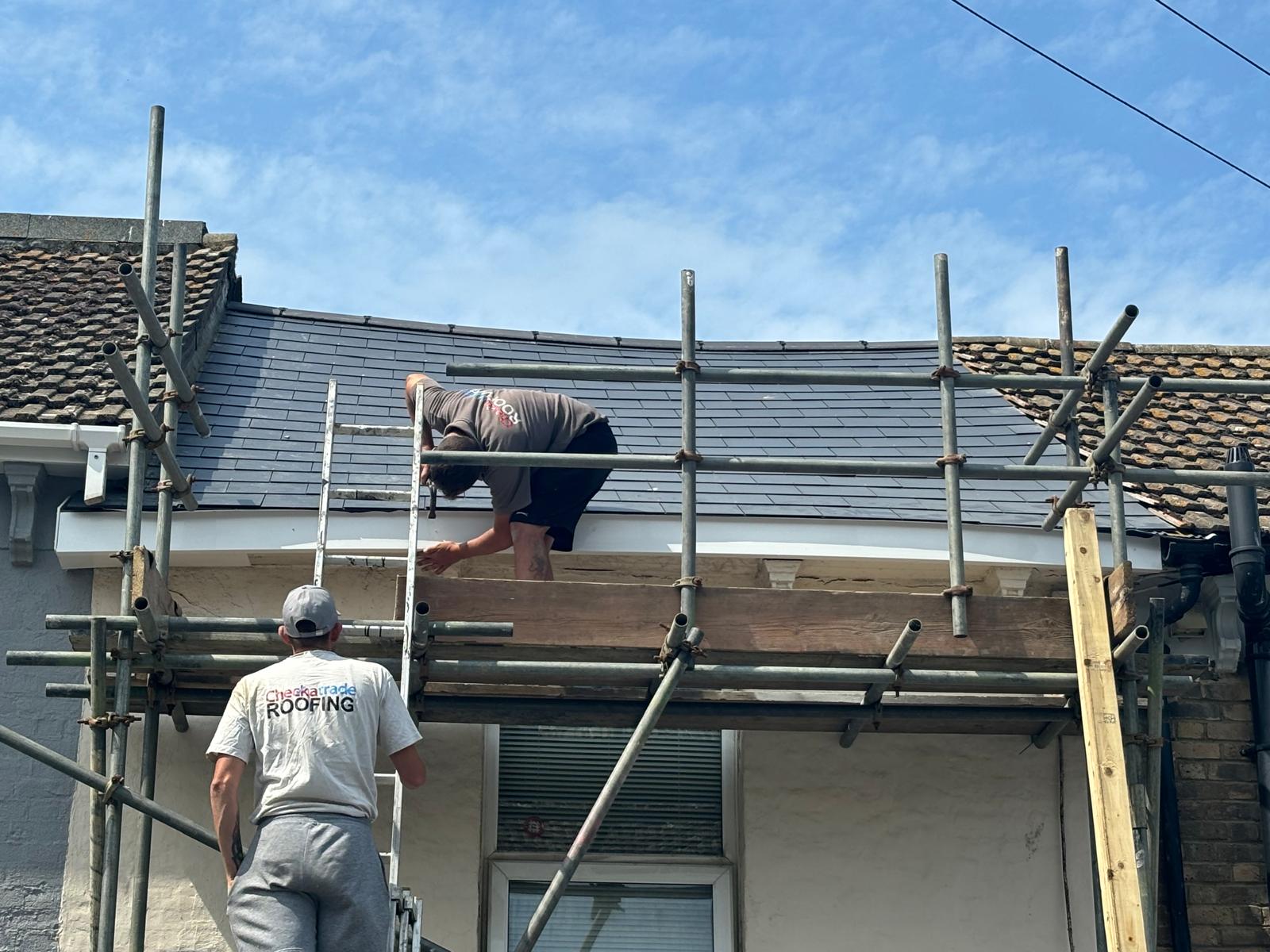So when is the right time for you to replace your roof tiles?
Roof tiles play a vital role in protecting your home from the elements. Over time, they can become damaged or worn, leading to issues that compromise your roof’s integrity. Knowing when to replace roof tiles is essential for maintaining a safe, efficient, and aesthetically pleasing roof. In this guide, we’ll discuss the signs that your roof tiles need replacing, the risks of delaying repairs, and how to manage the replacement process.
Why Roof Tiles Need Replacing
Roof tiles are designed to be durable, but they are not indestructible! Over time, exposure to weather, natural wear and tear, and unexpected events can cause damage. Here are the main reasons why tiles may need replacing:
- Weather Damage: In the UK, heavy rain, strong winds, and freezing temperatures can weaken or dislodge tiles.
- Ageing: Most roof tiles have a lifespan of 20–50 years, depending on the material.
- Impact Damage: Falling debris, such as tree branches, can crack or break tiles.
- Poor Installation: Improperly installed tiles may not provide adequate protection and are more likely to fail prematurely.
Signs You Need to Replace Roof Tiles
Spotting the signs of damaged or failing roof tiles early can prevent further problems. Here are the key indicators:
1. Cracked or Broken Tiles
- What to Look For: Visible cracks, chips, or complete breaks in individual tiles.
- Why It Matters: Cracked tiles allow water to seep through, leading to leaks and potential structural damage.
2. Missing Tiles
- What to Look For: Gaps where tiles should be.
- Why It Matters: Missing tiles expose the underlayment, making your roof vulnerable to water damage and pests.
3. Leaks Inside Your Home
- What to Look For: Water stains on ceilings, damp patches on walls, or dripping water during rainfall.
- Why It Matters: Leaks are often caused by damaged tiles that can no longer provide a watertight barrier.
4. Moss and Algae Growth
- What to Look For: Green or black patches on your roof.
- Why It Matters: Moss and algae retain moisture, which can weaken tiles over time.
5. Sagging Roof
- What to Look For: A visible dip or uneven roofline.
- Why It Matters: While not directly related to tiles, sagging may indicate that tiles and underlying structures need replacement.
6. Granules in Gutters
- What to Look For: Small granules from tiles accumulating in your gutters.
- Why It Matters: This signals the erosion of tile surfaces, reducing their protective qualities.
Risks of Ignoring Damaged Roof Tiles
Delaying the replacement of damaged tiles can lead to more severe issues, including:
- Water Damage
- Damaged tiles allow water to penetrate the roof, causing leaks and dampness that can lead to mould and rot.
- Structural Issues
- Prolonged exposure to water can weaken the wooden supports and other structural elements of your roof.
- Increased Costs
- Minor repairs left unaddressed can escalate into significant expenses, such as full roof replacements.
- Energy Inefficiency
- Gaps and damage reduce insulation, leading to higher heating and cooling costs.
How to Replace Roof Tiles
Replacing roof tiles is a task best left to professionals, but understanding the process can help you prepare. Here’s an overview:
- Assessment
- A roofer inspects the roof to determine the extent of the damage and identifies the tiles that need replacing.
- Tile Removal
- Damaged tiles are carefully removed without affecting surrounding tiles.
- Underlayment Check
- The roofer inspects the underlayment for any signs of damage and repairs it if necessary.
- Tile Replacement
- New tiles are installed and secured to ensure they stay in place.
- Final Inspection
- The roofer checks the roof to ensure the repair is watertight and properly aligned.
Cost of Replacing Roof Tiles
- Individual Tile Replacement: £100–£200 per tile, including labour.
- Partial Roof Replacement: £500–£2,000, depending on the size of the affected area.
- Full Roof Replacement: £5,000–£12,000 for standard homes.
For accurate quotes, it’s advisable to contact local roofers. Checkatrade is an excellent resource for finding reputable professionals in your area.
Preventing Tile Damage
While roof tile replacement is sometimes unavoidable, regular maintenance can minimise the risk of damage. Here’s how:
1. Regular Inspections
- Inspect your roof twice a year and after storms to identify potential issues early.
2. Clean Your Gutters
- Blocked gutters can lead to water pooling on the roof, increasing the risk of damage.
3. Trim Overhanging Trees
- Overhanging branches can scrape tiles or fall during storms.
4. Remove Moss
- Keep your roof free of moss and algae to prevent moisture retention.
When to Call a Professional
If you’re unsure whether your roof tiles need replacing, it’s best to consult a professional. Common scenarios that warrant professional advice include:
- Persistent leaks inside your home.
- Visible sagging or widespread damage.
- Recurrent problems despite previous repairs.
Hiring a qualified roofer ensures that the job is done safely and effectively. Visit our Checkatrade here
Contact Trust A Trade Roofing for Roof Tile Replacement
At Trust A Trade Roofing, we specialise in diagnosing and replacing damaged roof tiles across Kent. Whether you need a single tile replaced or a full roof overhaul, our expert team is here to help.
Contact us here for a no-obligation quote or to schedule an inspection. Protect your home with our reliable roofing services.
Conclusion
Knowing when to replace roof tiles is essential for maintaining the integrity and efficiency of your roof. From cracked and missing tiles to leaks and moss growth, identifying these signs early can save you time, money, and stress. Regular maintenance and timely repairs not only extend the life of your roof but also protect your home from costly damage.

